APRIL 2012: Most of us are familiar with Wi-Fi (Wireless Fidelity), which uses 2.4-5GHz RF to deliver wireless Internet access around our homes, schools, offices and in public places. We have become quite dependent upon this nearly ubiquitous service. But like most technologies, it has its limitations.
While Wi-Fi can cover an entire house, its bandwidth is typically limited to 50-100 megabits per second (Mbps) today using the IEEE802.11n standard. This is a good match to the speed of most current Internet services, but insufficient for moving large data files like HDTV movies, music libraries and video games.
The more we become dependent upon ‘the cloud’ or our own ‘media servers’ to store all of our files, including movies, music, pictures and games, the more we will want bandwidth and speed. Therefore RF-based technologies such as today’s Wi-Fi are not the optimal way. In addition, Wi-Fi may not be the most efficient way to provide new desired capabilities such as precision indoor positioning and gesture recognition.
Optical wireless technologies, sometimes called visible light communication (VLC), and more recently referred to as Li-Fi (Light Fidelity), on the other hand, offer an entirely new paradigm in wireless technologies in terms of communication speed, flexibility and usability.
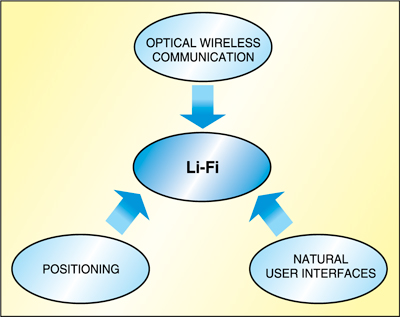
Visible light communications
Many people’s first exposure to optical wireless technology was VLC. This emerging technology offers optical wireless communications by using visible light. Today, it is seen as an alternative to different RF-based communication services in wireless personal-area networks. An additional opportunity is arising by using current state-of-the-art LED lighting solutions for illumination and communication at the same time and with the same module. This can be done due to the ability to modulate LEDs at speeds far faster than the human eye can detect while still providing artificial lighting.
Thus while LEDs will be used for illumination, their secondary duty could be to ‘piggyback’ data communication onto lighting systems. This will be particularly relevant in indoor ‘smart’ lighting systems, where the light is always ‘on.’
Other examples for outdoor use include intelligent traffic systems to exchange data between vehicles, and between vehicles and road infrastructure like traffic lights and control units. Alternatively, the LEDs’ primary purpose could be to transmit information while the secondary purpose of illumination would be to alert the user to where the data is being transmitted from.
In contrast to infrared, the so-called “what you see is what you send” feature can be used to improve the usability of transmitting data at shorter point-to-point distances between different portable or fixed devices. There, illumination can be used for beam guiding, discovery or generating an alarm for misalignment.
The premise behind VLC is that because lighting is nearly everywhere, communications can ride along for nearly free. Think of a TV remote in every LED light bulb and you’ll soon realise the possibilities of this technology.
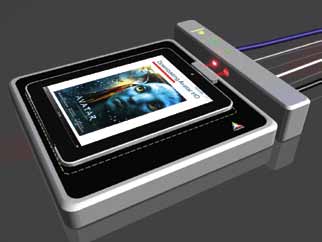
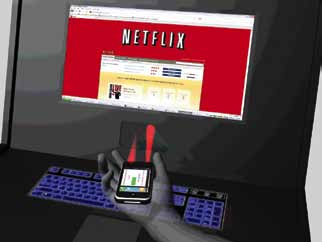
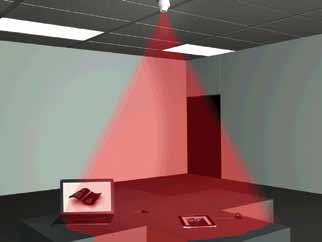
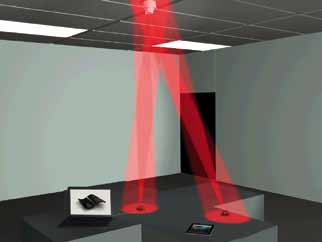
Fig. 2: GigaSpeed usage models (Images courtesy: TriLumina Corp.)
One of the biggest attractions of VLC is the energy saving of LED technology. Nineteen per cent of the worldwide electricity is used for lighting. Thirty billion light bulbs are in use worldwide. Assuming that all the light bulbs are exchanged with LEDs, one billion barrels of oil could be saved every year, which again translates into energy production of 250 nuclear power plants.
Driven by the progress of LED technology, visible light communication is gaining attention in research and development. The VLC Consortium (VLCC) in Japan was one of the first to introduce this technology.
After establishing a VLC interest group within the IEEE 802.15 wireless personal-area networks working group, the IEEE 802.15.7 task group was established by the industry, research institutes and universities in 2008. The final standard was approved in 2011. It specifies VLC comprising mobile-to-mobile (M2M), fixed-to-mobile (F2M) and infrastructure-to-mobile (I2M) communications. There, the focus is on low-speed, medium-range communications for intelligent traffic systems and on high-speed, short-range M2M and F2M communications to exchange, for example, multimedia data. Data rates are supported from some 100 kbps up to 100 Mbps using different modulation schemes.
Other standardisation groups are working on standardised optical wireless communication (OWC) solutions using visible and infrared light. The most important groups are IrDA with its new 10 Giga-IR working group, ISO and ICSA.







